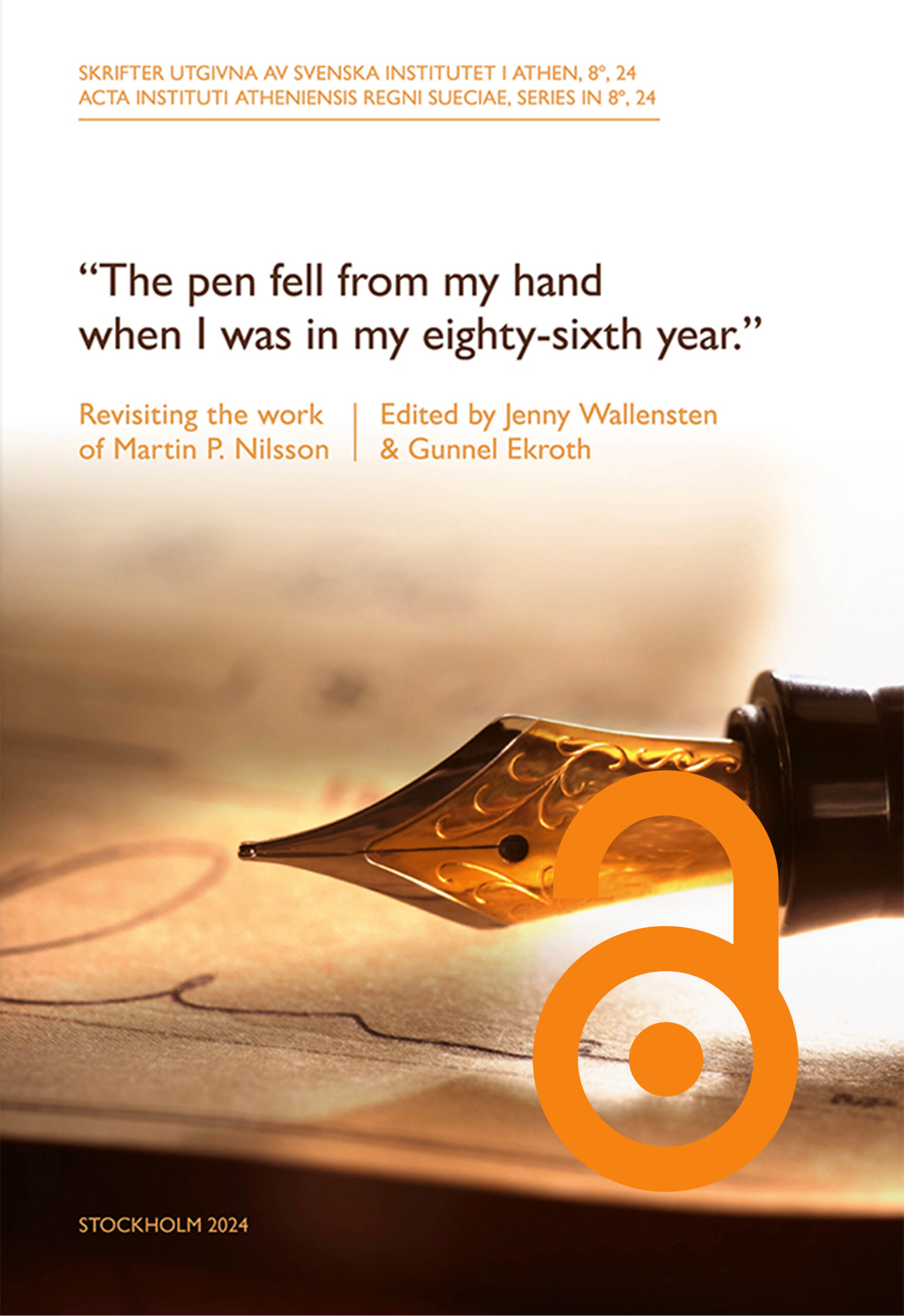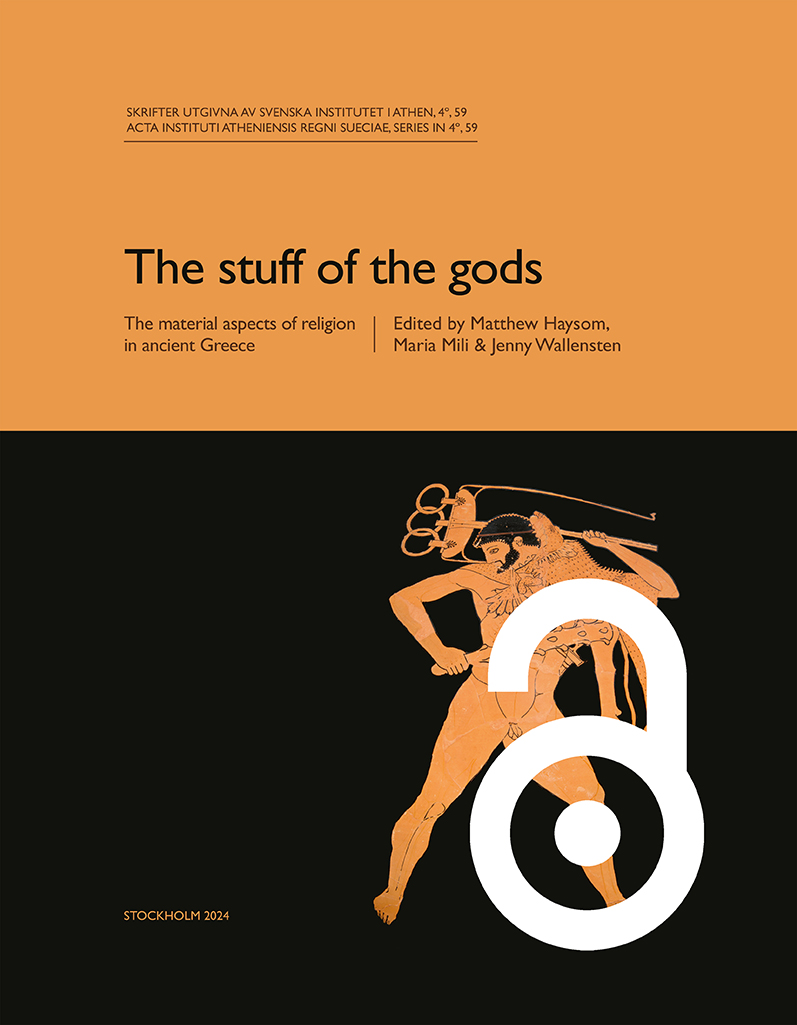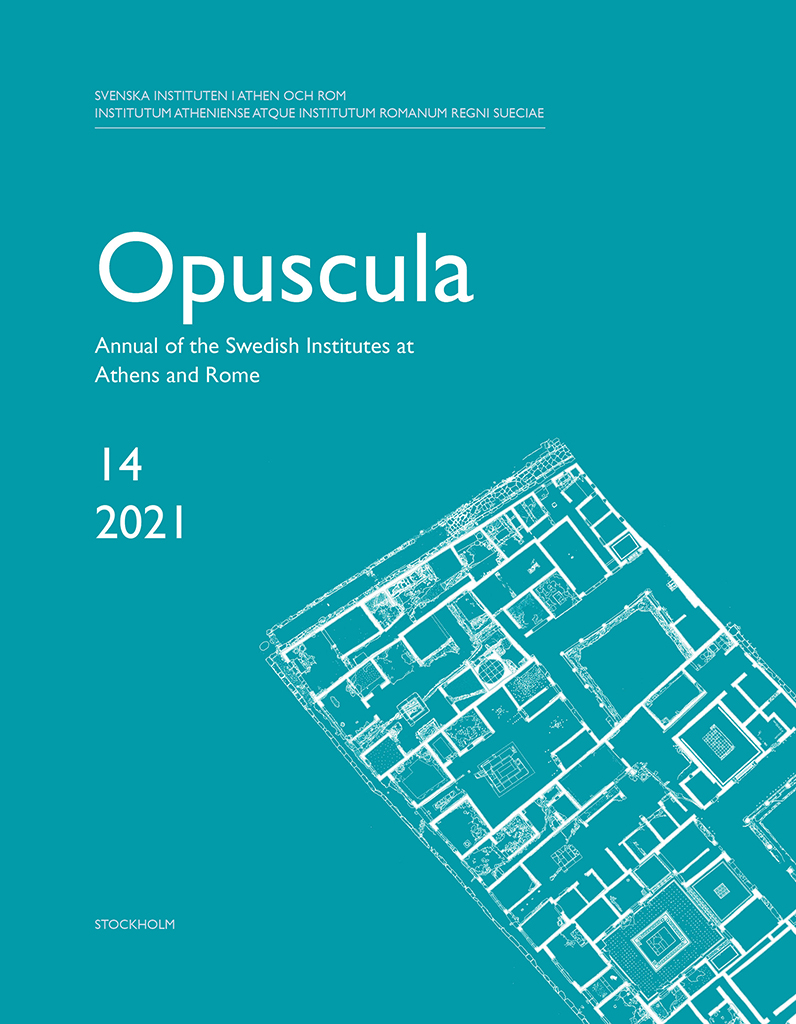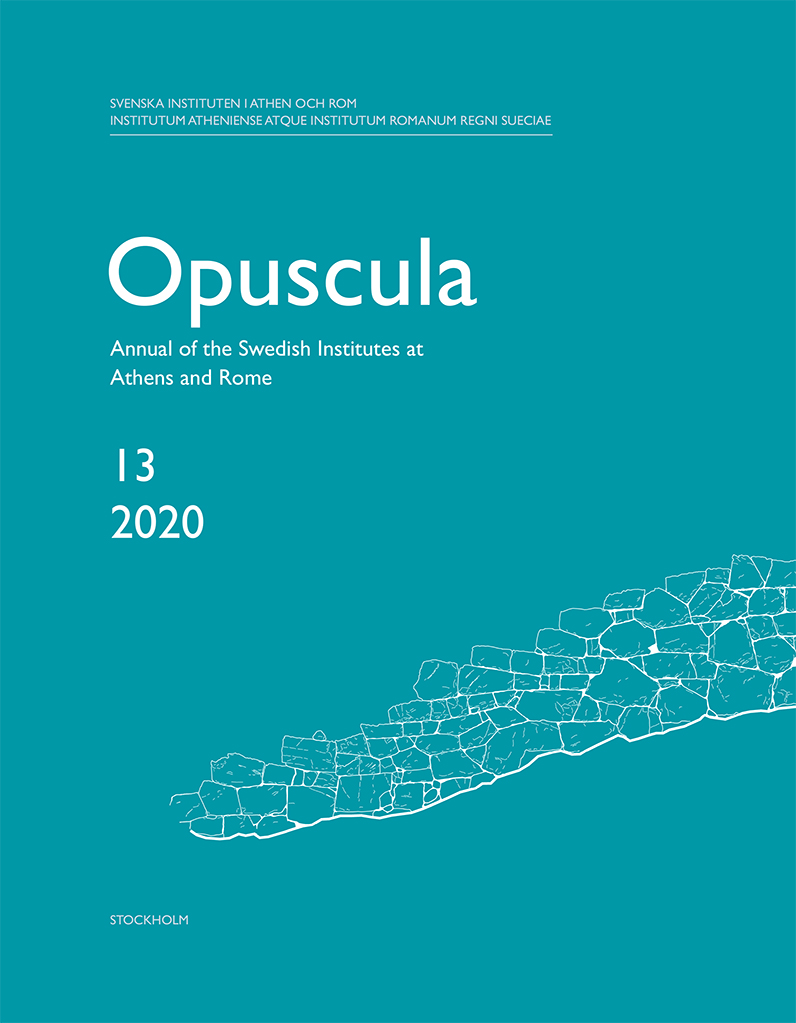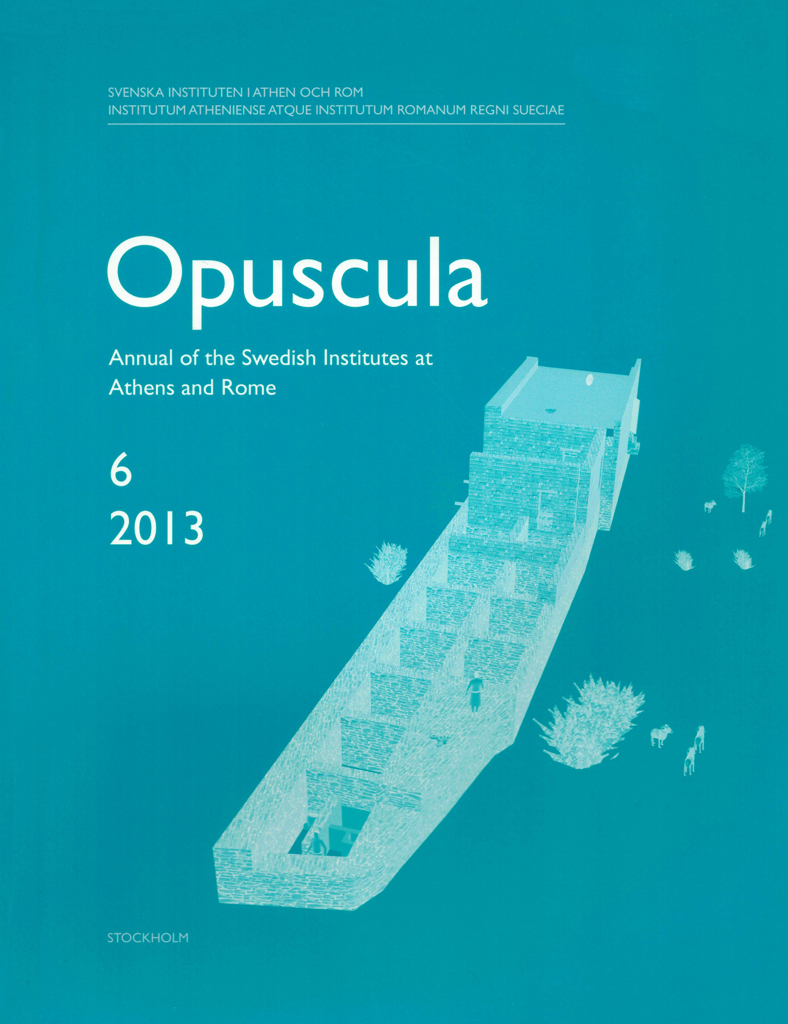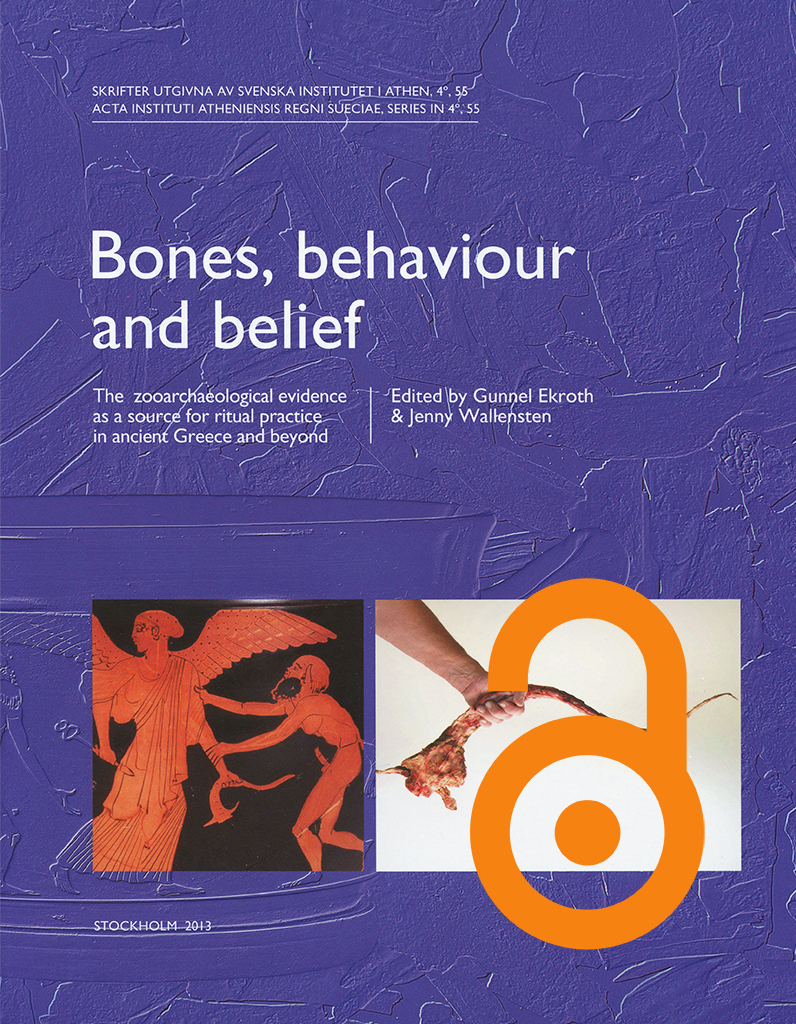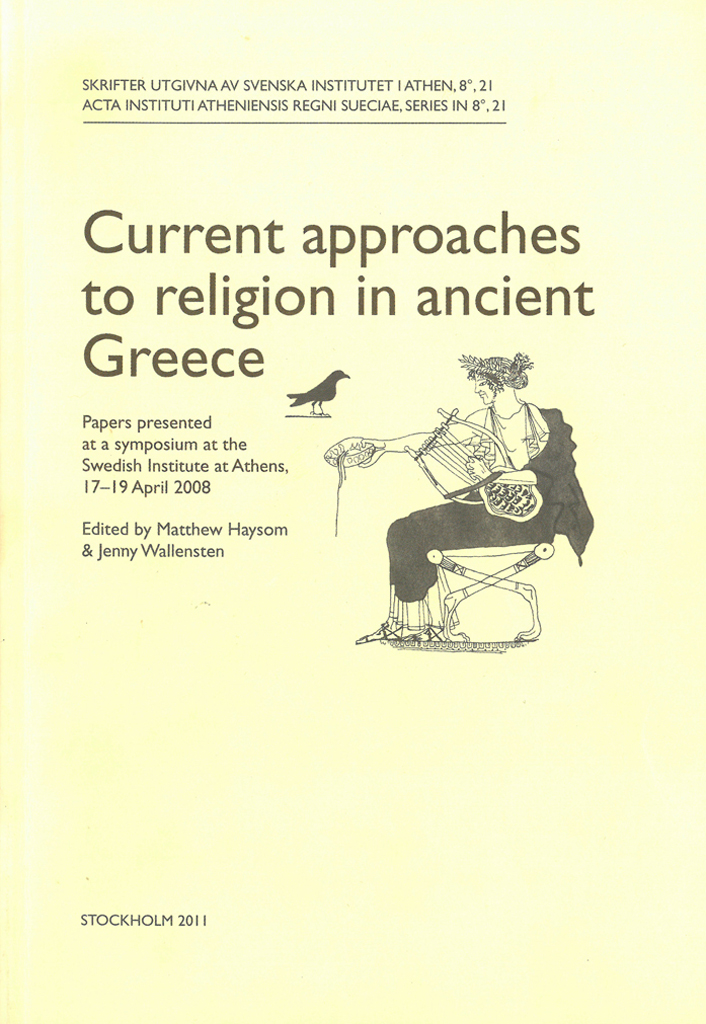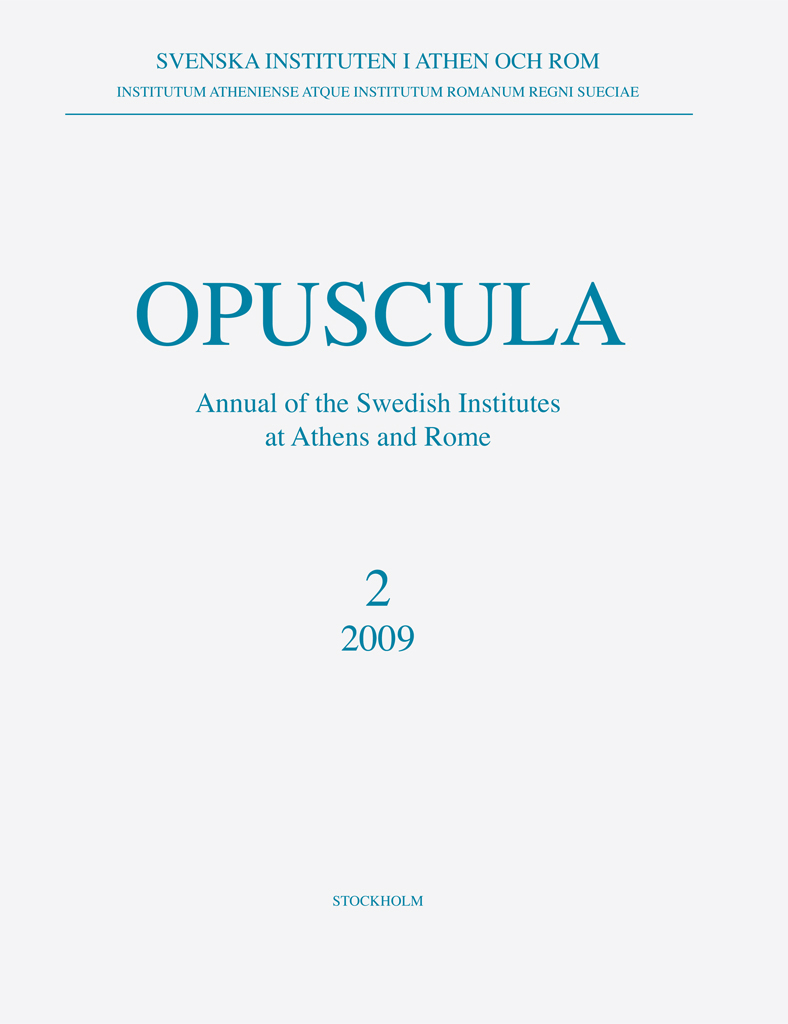Published by the Swedish Institute at Athens. Distributed by Eddy.se AB. All content available with open access, use links below. “The pen fell from my hand when I was in my eighty-sixth year.” Revisiting the work of Martin P. Nilsson Edited by Jenny Wallensten & Gunnel Ekroth https://doi.org/10.30549/actaath-8-24 2017 marked the 50th anniversary of both the death of Martin P. Nilsson, the eminent Swedish scholar of ancient Greek religion, and the publication of the third edition of his monumental Geschichte der griechischen Religion. Nilsson’s scholarly output was huge, with a production of around 20 items annually, and he touched upon most aspects of the study of ancient Greek religion, be it in a book or an article, in a footnote or an in-depth argument. This volume constitutes a re-reading of Nilsson in the light of new ancient evidence, and modern methods and theoretical approaches. Five leading researchers in this field of religion revisit major works of Nilsson’s oeuvre—Geschichte der griechischen Religion, vols 1 and 2 (Jon Mikalson and Eftychia Stavrianopoulou), Greek folk religion (Vinciane Pirenne-Delforge), Minoan-Mycenaean religion (Matthew Haysom) and Greek piety (Michael D. Konaris)—in order to explore whether his works today are mainly touched upon with just the usual…
Published by the Swedish Institute at Athens. Distributed by Eddy.se AB. All content is available with open access, use links below. The stuff of the gods. The material aspects of religion in ancient Greece Edited by Matthew Haysom, Maria Mili & Jenny Wallensten https://doi.org/10.30549/actaath-4-59 The “material turn” in the humanities and social sciences has brought about an expanded understanding of the material dimension of all cultural and social phenomena. In the Classics it has resulted in the breaking down of boundaries within the discipline and a growing interest in materiality within literature. In the study of religion cross-culturally new perspectives are emphasising religion as a material phenomenon and belief as a practice founded in the material world. This volume brings together experts in all aspects of Greek religion to consider its material dimensions. Chapters cover both themes traditionally approached by archaeologists, such as dedications and sacred space, and themes traditionally approached by philologists, such as the role of objects in divine power. They include a wide variety of themes ranging from the imminent material experience of religion for ancient Greek worshippers to the role of material culture in change and continuity over the long term. Chapter abstracts and author affiliations…
Opuscula is published by the Swedish Institutes at Athens and Rome, with the aid of a grant from the Swedish Research Council. Distributed by Eddy.se AB. View journal at ERIH PLUS. All content available with open access. The key to Hermione? Notes on an inscribed monument By Jenny Wallensten (Swedish Institute at Athens, Greece) Abstract This article discusses an inscribed monument found during rescue excavations in the ancient city of Hermione. It provides an editio princeps for the one-word inscription and discusses the symbolism of its relief depiction of a temple key. The examination of the monument is followed by a discussion proposing a new perspective on how to approach the religious milieu of ancient Hermione. Bibliographical information Jenny Wallensten, ’The key to Hermione? Notes on an inscribed monument’, Opuscula. Annual of the Swedish Institutes at Athens and Rome (OpAthRom) 14, Stockholm 2021, 169-180. ISSN: 2000-0898. ISBN: 978-91-977799-3-7. Softcover, 478 pages. https://doi.org/10.30549/opathrom-14-10 Hermione. A Greek cityscape and its people The section on Hermione, published in OpAthRom 14, comprises six articles: Alcestis Papadimitriou | An ancient cityscape and its people: A study of ancient Hermione. Introductory remarks on historical sources and visible remains, archaeological research and prospects (pp. 65-76) Henrik Gerding | The topography of Hermione—A preliminary…
Opuscula is published by the Swedish Institutes at Athens and Rome, with the aid of a grant from the Swedish Research Council. Distributed by Eddy.se AB. View journal at ERIH PLUS. All content available with open access. Religion and family politics in Hellenistic Kalaureia. Three new inscriptions from the sanctuary of Poseidon By Nikolaos Papazarkadas (University of California, Berkeley, USA) & Jenny Wallensten (Swedish Institute at Athens, Greece) Abstract This article presents three unpublished Hellenistic inscriptions from the sanctuary of Poseidon in Kalaureia (modern Poros): two found during archaeological excavations on the site and one recorded in a letter that was once part of Ioannis Kapodistrias’ official correspondence. All three inscriptions were dedicatory and carved on bases supporting portrait statues. Interestingly, they were offered to Poseidon by members of a single family already known from other documents in the Kalaureian epigraphic corpus. Remarkably, eight out of the 18 inscriptions discovered in Kalaureia make repeated references to men and women of this very family, which appears to have materially dominated Poseidon’s temenos and its environs during the 3rd and 2nd centuries BC through the careful placement of portraits of its members. Most of these statues were conspicuously placed by the entrance…
Opuscula is published by the Swedish Institutes at Athens and Rome, with the aid of a grant from the Swedish Research Council. Distributed by Eddy.se AB. View journal at ERIH PLUS. All content available with open access. Karpophoroi deities and the Attic cult of Ge. Notes on IG II2 4758 By Jenny Wallensten Abstract Karpophoros, fruit-bearing, is an epithet easily considered as “literary”, i.e., a poetic name with little or no relation to cult. The epigraphic sources, however, clearly show us that gods thus named were offered divine worship. The epithet is found in connection with several deities. Goddesses of agriculture, such as Demeter, and Ge, the Earth, naturally carry this name, but so do Zeus, Dionysos and a goddess known as “The Aiolian”, who was sometimes associated with Agrippina. This paper surveys deities known as karpophoroi and examines what their cult entailed. Its focus is, however, on a brief Acropolis inscription, IG II2 4758, where Ge is honoured as Karpophoros, in accordance with an oracle. The case study provides insights into the Attic cult of Ge, the epithet Karpophoros, as well as the use and function of epithets within Greek dedicatory language. Bibliographical information Jenny Wallensten, ‘Karpophoroi deities and…
Opuscula is published by the Swedish Institutes at Athens and Rome, with the aid of a grant from the Swedish Research Council. Distributed by Eddy.se AB. View journal at ERIH PLUS. All content available with open access. Berit Wells in Memoriam By Arto Penttinen & Jenny Wallensten Introduction The following section honours our colleague, teacher, and friend, Berit Wells. The contributions were originally to be included in a Festschrift, which we wished to present to Berit on her 67th birthday. Sadly, Berit lost her battle against cancer before we could finish the volume. We thus decided to transform the Festschrift into a conference dedicated to her memory, and this event took place over two cold winter days in December 2009. For the Festschrift we had chosen two themes: religion and food production in the ancient Greek world. The interface of these very broad themes seemed to us to converge and offer an overall perspective of Berit’s research and simultaneously, they allowed colleagues from all stages of Berit’s careers to take part and contribute to the conference. The six articles included in Opuscula 2014 are a selection of the conference papers, which also included reports from the Poros excavations. Poros was…
Opuscula is published by the Swedish Institutes at Athens and Rome, with the aid of a grant from the Swedish Research Council. Distributed by Eddy.se AB. View journal at ERIH PLUS. All content available with open access. Book reviews Jesper Blid | Building a new Rome: The imperial colony of Pisidian Antioch (25 BC–AD 700), eds. E.K. Gazda & D. Y. Ng, in collaboration with Ü. Demirer, Ann Arbor, Michigan 2011. 219 pp., 168 ills. +1 video disc. ISBN 978-0-9741873-4-1. https://doi.org/10.30549/opathrom-06-11 Anton Bonnier | E. Farinetti, Boeotian Landscapes. A GIS-based study for the reconstruction and interpretation of the archaeological datasets of ancient Boeotia (BAR-IS, 2195), Oxford: Archaeopress 2011. xiv + 425 pp. + 1 CD. ISBN 978-1-4073-0750-3. https://doi.org/10.30549/opathrom-06-12 Maja Kramer | G. López Monteagudo, M.L. Neira Jiménez, ‘Mosaico’, in Arte Romano de la Bética. Mosaico. Pintura. Manufacturas, ed. P. León, Sevilla: Focus-Abengoa 2010. 381 pp., 482 ills. ISBN 978-84-89895-27-0. https://doi.org/10.30549/opathrom-06-13 Gullög Nordquist | Mesohelladika. La Grèce continentale au Bronze Moyen. Actes du colloque international organisé par l’École française d’Athènes, en collaboration avec l’American School of Classical Studies at Athens et le Netherlands Institute in Athens, Athènes, 8–12 mars 2006 (BCH Suppl., 52), eds. A. Philippa-Touchais, G. Touchais, S. Voutsaki &…
Published by the Swedish Institute at Athens. Distributed by Eddy.se AB. All content is available with open access, use links below. Bones, behaviour and belief. The zooarchaeological evidence as a source for ritual practice in ancient Greece and beyond Edited by Gunnel Ekroth & Jenny Wallensten https://doi.org/10.30549/actaath-4-55 Abstract The importance of the zooarchaeological evidence as a source for ritual practices in ancient Greece is gradually becoming widely recognized. Animal bones form the only category of evidence for Greek cult which is constantly significantly increasing, and they can complement and elucidate the information provided by texts, inscriptions and images. This volume brings together sixteen contributions exploring ritual practices and animal bones from different chronological and geographical perspectives, foremost ancient Greece in the historical period, but also in the Bronze Age and as early as the Neolithic period, as well as Anatolia, France and Scandinavia, providing new empirical evidence from a number of major sanctuaries and cult-places. On a methodological level, the complexity of identifying ritual activity from the zooarchaeological evidence is a recurrent theme, as is the prominence of local variation visible in the bone material, suggesting that the written sources and iconography may offer simplified or idealized versions of the…
Published by the Swedish Institute at Athens. Distributed by Eddy.se AB. Current approaches to religion in ancient Greece. Papers presented at a symposium at the Swedish Institute at Athens, 17–19 April 2008 Edited by Matthew Haysom & Jenny Wallensten Abstract In recent years Greek religion has emerged as one of the main topics for the study of ancient Greek society as a whole. This flourishing interest is certainly due to the recognition of the centrality of religion to Greek culture: religious beliefs and practices were connected to almost every aspect of the Greek world. This volume brings together fourteen contributions from a group of upcoming international scholars, presented at a conference held in the Swedish Institute at Athens and the British School at Athens in 2008. The papers take a wide range of approaches: archaeological, epigraphic, iconographical, philological and historical. They demonstrate the diversity of the subject, covering such issues as nineteenth-century historiography, cult epithets, the pantheon, regionalism, polis religion, the performance of ritual, the use of music in ritual, the accessibility of sacred space, and the visual aspects of dedications. The contributions bring new theoretical perspectives, seek to better understand ritual, and highlight the variety of Greek religion. Contents…
Opuscula is published by the Swedish Institutes at Athens and Rome, with the aid of a grant from the Swedish Research Council. Distributed by Eddy.se AB. View journal at ERIH PLUS. All content available with open access. Book reviews Gunnel Ekroth | M-Z. Petropoulou, Animal sacrifice in ancient Greek religion, Judaism, and Christianity, 100 BC to AD 200 (Oxford Classical monographs), Oxford 2008. xii + 336 p. ISBN 978-0-19-921854-7. https://doi.org/10.30549/opathrom-02-13 Jenny Wallensten | S.I. Johnston, Ancient Greek Divination (Blackwell Ancient Religions), Chichester: Wiley-Blackwell 2008. 193 p. ISBN: 978-1-4051-1573-5. https://doi.org/10.30549/opathrom-02-14 Simon Malmberg | P. von Rummel, Habitus barbarus: Kleidung und Repräsentation spätantiker Eliten im 4. und 5. Jahrhundert. Berlin: de Gruyter 2007. xi + 481 pp. ISBN: 978-3-11-019150-9. https://doi.org/10.30549/opathrom-02-15 Lars Karlsson | O. Henry, Tombes de Carie. Architecture funéraire et culture carienne, VIe–IIe siècle av. J.-C. Rennes: Presses Universitaires de Rennes, 2009. 289 pp., 163 figs., 16 pls. ISBN 978-2-7535-0758-6. https://doi.org/10.30549/opathrom-02-16 Bibliographical information ‘Book reviews’, Opuscula. Annual of the Swedish Institutes at Athens and Rome (OpAthRom) 2, 221–228. Stockholm 2009. ISSN: 2000-0898. ISBN: 978-91-977798-1-4. Softcover, 232 pages.

